This article explores various elegant bed head wall designs that elevate the aesthetic of modern bedrooms, providing inspiration and practical insights for creating a stylish and inviting space. The bed head wall serves as a critical element in bedroom design, acting as a focal point that can transform the entire ambiance of the room.
Understanding Bed Head Wall Design
Bed head wall design refers to the decorative and functional elements placed behind the bed. This area not only enhances the visual appeal but also contributes to the overall functionality of the bedroom. A well-designed bed head wall can create a harmonious balance between style and comfort, making it an essential aspect of modern interior design.
Popular Materials for Bed Head Walls
Choosing the right materials is crucial for achieving an elegant look. Common options include:
- Wood: Provides warmth and a classic touch.
- Fabric: Offers comfort and a soft aesthetic.
- Metal: Adds a modern edge and durability.
- Wallpaper: Can introduce patterns and colors easily.
Wooden Bed Head Walls
Wooden headboards are timeless and versatile. They can be stained or painted to match various design themes, making them suitable for modern interiors. Different finishes, such as matte, glossy, or distressed, can dramatically change the look of wooden headboards, allowing for personalization based on individual style preferences.
Incorporating Wood Paneling
Wood paneling behind the bed creates a dramatic and sophisticated backdrop, enhancing the overall ambiance of the bedroom while adding depth and dimension. This design choice can make a small space feel more expansive and inviting.
Fabric Upholstered Headboards
Fabric headboards provide a soft aesthetic and comfort. They can be tufted or smooth and are available in numerous colors and patterns to match any bedroom theme. The use of fabric also allows for easy updates; simply changing the upholstery can refresh the entire look of the room.
Wall Art and Decor Ideas
Incorporating wall art and decor can elevate the bed head wall design. Consider framed artwork, mirrors, or decorative shelves to add character and interest. Mirrors reflect light and create the illusion of a larger space, while a gallery wall featuring a curated selection of art pieces can personalize the space and draw attention to the bed head area.
Color Schemes for Bed Head Walls
The color choice for the bed head wall significantly impacts the room’s mood. Neutral tones create a calm environment, while bold colors can add vibrancy and energy. Soft, neutral colors such as beige, gray, or pastel shades promote a tranquil atmosphere, ideal for restful sleep and relaxation. In contrast, incorporating bold colors like deep blue or emerald green can create a dramatic effect, making the bed head wall a standout feature in modern bedroom design.
Lighting Considerations for Bed Head Walls
Lighting plays a vital role in enhancing the elegance of bed head walls. Proper lighting can highlight design features and create a cozy ambiance. Wall sconces flanking the bed provide functional lighting while adding a decorative touch, enhancing the overall elegance of the head wall design. Additionally, integrating LED strip lighting along the edges of the bed head wall can create a contemporary look, adding a soft glow that enhances the room’s modern aesthetic.
Final Thoughts
In conclusion, the bed head wall is a significant design element that can greatly influence the overall feel of a modern bedroom. By carefully selecting materials, colors, and decorative elements, one can create a stylish and inviting space that reflects personal taste and promotes comfort.
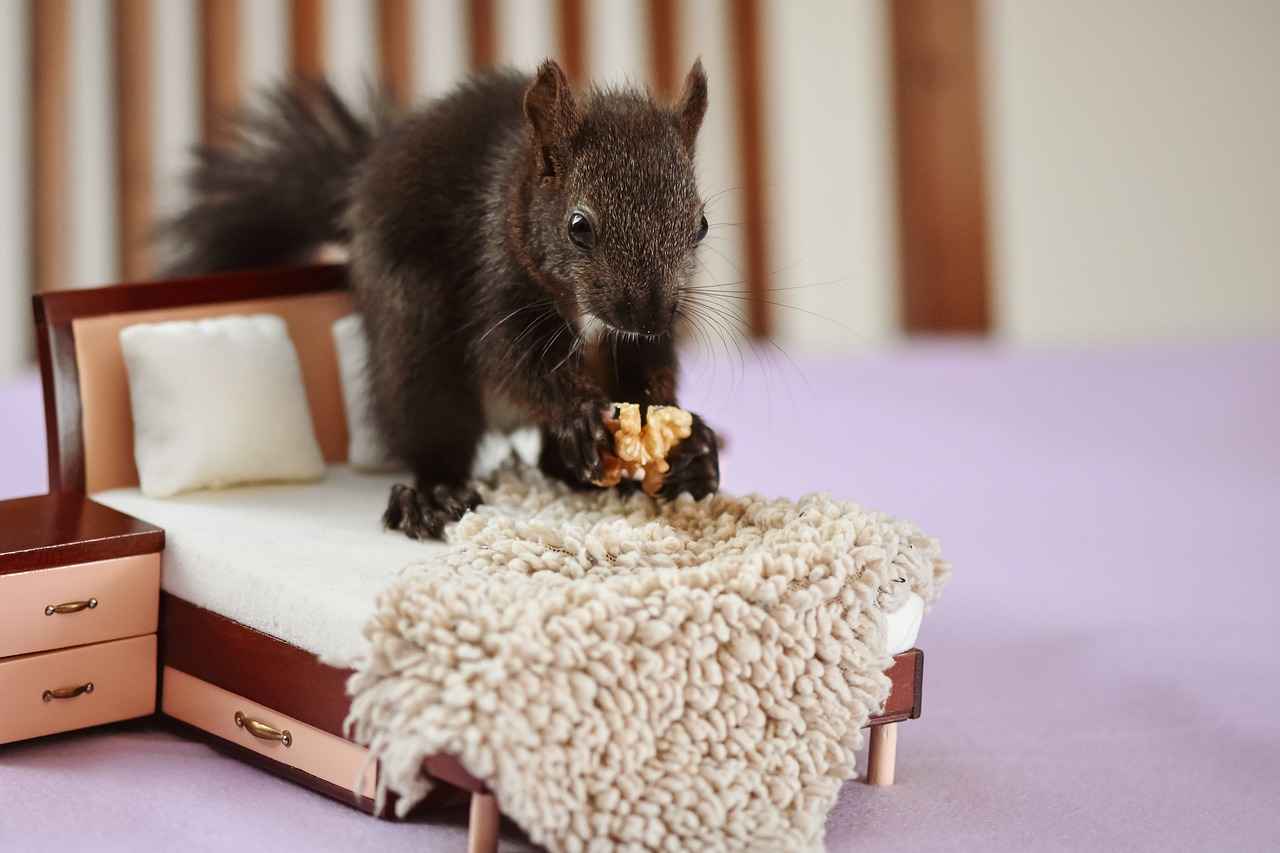
Understanding Bed Head Wall Design
is essential for anyone looking to create a stylish and functional bedroom. The bed head wall design encompasses the decorative and practical elements that are positioned behind the bed, making it a significant focal point in the room. By integrating both aesthetics and utility, this design approach enhances the overall decor of the bedroom.
When considering bed head wall design, it is important to recognize that it serves multiple purposes. Firstly, it acts as a visual anchor for the room, drawing attention to the bed, which is typically the centerpiece of any bedroom. Secondly, it can provide additional functionality, such as incorporating storage solutions or integrated lighting. This dual role makes it a critical aspect of modern bedroom design.
One of the key elements of bed head wall design is the choice of materials. Popular materials include:
- Wood: Offers a warm, classic feel and can be customized with various finishes.
- Fabric: Provides comfort and a soft aesthetic, available in numerous colors and patterns.
- Metal: Adds a modern touch and can be used for a sleek, industrial look.
- Wallpaper: Allows for creative patterns and textures, enhancing visual interest.
Among these, wooden bed head walls are particularly popular due to their versatility. They can be stained or painted to match different design themes, making them suitable for various styles, from rustic to contemporary. Different wood finishes, such as matte, glossy, or distressed, can dramatically alter the appearance, allowing for personalization based on individual preferences.
Fabric upholstered headboards are another excellent choice for those seeking comfort and style. They can be tufted for a more luxurious look or kept smooth for a minimalist approach. Available in an array of colors and textures, fabric headboards can complement any bedroom theme, adding a touch of elegance.
Incorporating wall art and decor is an effective way to elevate the bed head wall design. Consider utilizing framed artwork, mirrors, or decorative shelves to add character and depth to the space. Mirrors, in particular, can reflect light and create the illusion of a larger room, enhancing the elegance of the head wall.
Another creative option is to design a gallery wall that features a curated selection of artwork or photographs. This not only personalizes the space but also draws attention to the bed head area, making it a striking focal point.
When it comes to color schemes, the choice of hues for the bed head wall can significantly influence the room’s atmosphere. Soft, neutral tones such as beige, gray, or pastel shades promote a calm and serene environment, ideal for relaxation and restful sleep. Conversely, bold colors like deep blue or emerald green can create a dramatic effect, making the bed head wall a standout feature in modern bedroom design.
Lighting is another crucial aspect that can enhance the elegance of bed head walls. Proper lighting can highlight design features and create a cozy ambiance. Wall sconces flanking the bed provide functional lighting while adding a decorative touch. Additionally, integrating LED strip lighting along the edges of the bed head wall can create a contemporary look, offering a soft glow that enhances the room’s modern aesthetic.
In summary, understanding bed head wall design is about more than just aesthetics; it encompasses functionality, material choice, color schemes, and lighting considerations. By thoughtfully combining these elements, you can create a stylish and inviting bedroom that reflects your personal taste while enhancing the overall decor.
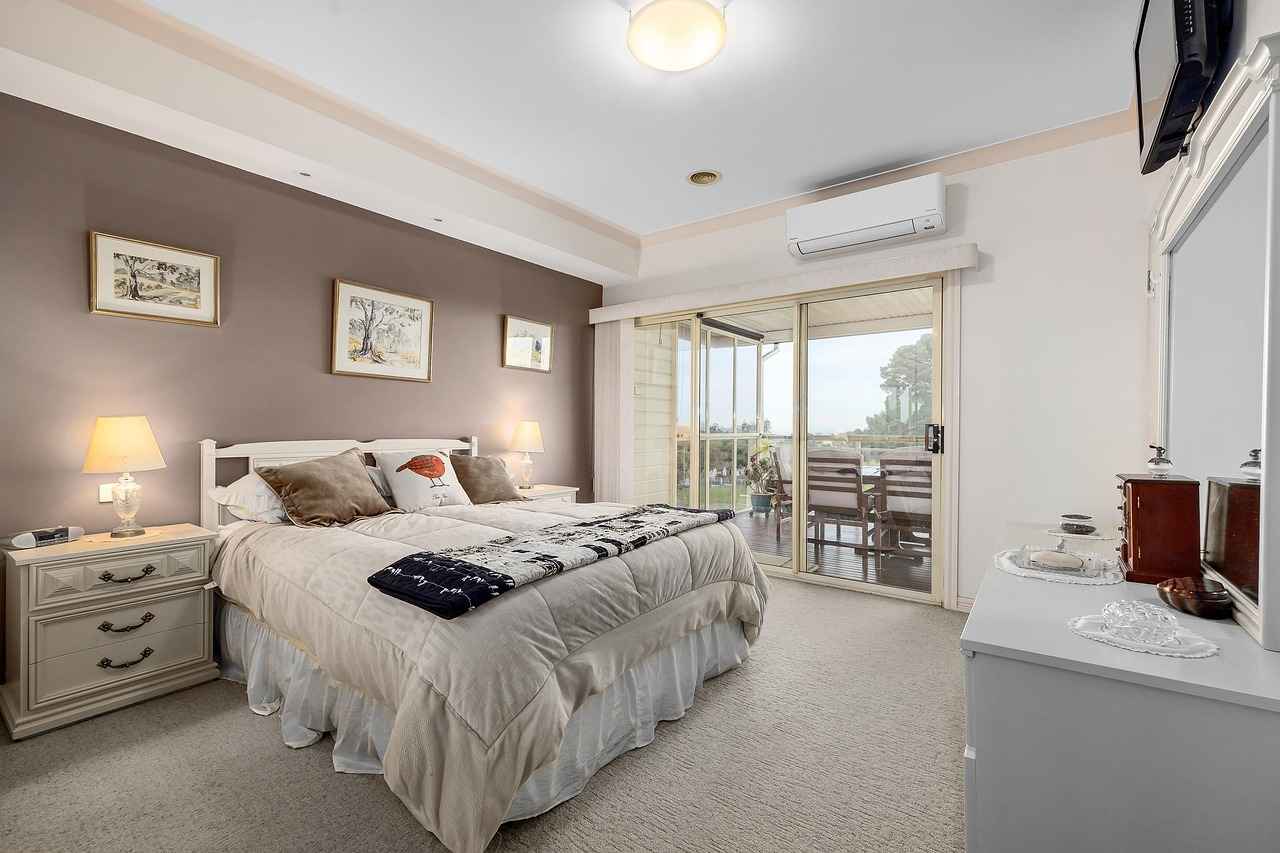
Popular Materials for Bed Head Walls
When designing a modern bedroom, the bed head wall serves as a critical focal point that can significantly influence the overall aesthetic. Selecting the right materials for this space is essential in achieving an elegant look. The materials you choose not only impact the visual appeal but also contribute to the room’s atmosphere and comfort. Below, we explore some of the most popular materials for bed head walls, each offering unique characteristics and benefits.
Wooden bed head walls are a classic choice that adds warmth and texture to a bedroom. The natural grain and variations in color make wood a versatile option that can complement various design themes, from rustic to contemporary. Different types of wood, such as oak, walnut, or pine, can be used to create a headboard that reflects your personal style.
Wood finishes can dramatically alter the appearance of a headboard. Matte finishes provide a subtle, understated look, while glossy finishes can add a touch of modern sophistication. Distressed finishes are perfect for creating a vintage or rustic feel, enhancing the character of the wood.
Fabric upholstered headboards are favored for their comfort and aesthetic appeal. They add a soft touch to the bedroom and can be customized in various colors, patterns, and textures. Options range from luxurious velvet to durable linen, allowing for personalization that matches your decor.
Tufted designs can add depth and interest, creating a plush appearance that invites relaxation. Smooth fabric headboards, on the other hand, offer a sleek and modern look, making them suitable for minimalist designs.
Metal headboards bring a contemporary edge to bedroom designs. Available in various finishes, such as brushed nickel or matte black, metal can create a striking contrast against softer materials like wood or fabric. They are also easy to maintain and can last for years without showing significant wear.
Combining metal elements with wood or fabric can create a visually appealing contrast. For example, a wooden bed frame paired with a metal headboard can introduce an interesting dynamic to the overall design.
Using wallpaper as a backdrop for the bed head wall can transform the space into a personalized retreat. With endless patterns, textures, and colors available, wallpaper allows for creative expression. Whether you prefer bold prints or subtle textures, wallpaper can set the tone for the entire room.
Textured wallpapers, such as grasscloth or embossed designs, can add depth and dimension, enhancing the visual interest of the bed head wall. This choice is particularly effective in creating a luxurious atmosphere.
Many modern designs incorporate multiple materials to create a unique look. For instance, a wooden headboard can be paired with fabric panels or framed artwork to enhance the aesthetic appeal. This approach allows for a personalized touch that reflects individual style.
In summary, choosing the right materials for your bed head wall is essential for achieving an elegant and inviting bedroom. Whether you opt for the natural warmth of wood, the softness of fabric, the sleekness of metal, or the artistic flair of wallpaper, each material offers distinct advantages that can enhance your space. Consider your personal style, the overall theme of your bedroom, and how each material can work together to create a cohesive and beautiful design.
Wooden Bed Head Walls
Wooden bed head walls are an exceptional choice for adding warmth and a classic touch to any modern bedroom. They serve not only as a functional element but also as a stunning focal point that enhances the overall aesthetic of the space. The versatility of wooden headboards allows them to be stained or painted in various colors, enabling them to seamlessly blend with different design themes, from minimalist to rustic.
- Timeless Appeal: Wooden headboards exude a timeless charm that can elevate the style of a bedroom.
- Durability: High-quality wood is sturdy and long-lasting, ensuring that your investment remains intact for years.
- Customization: The ability to stain or paint wood means you can easily update the look to match changing trends or personal preferences.
When it comes to wooden headboards, the finish can dramatically alter their appearance. Here are some popular options:
- Matte Finish: This finish offers a natural look and feel, perfect for a relaxed, organic vibe.
- Glossy Finish: A glossy finish reflects light beautifully, adding a modern touch and making the wood appear more vibrant.
- Distressed Finish: For a rustic or vintage look, distressed finishes can add character and uniqueness to the headboard.
Another innovative way to utilize wood in your bedroom design is through wood paneling. This technique involves installing wooden panels behind the bed, creating a dramatic and sophisticated backdrop. The paneling not only enhances the visual interest but also adds depth and dimension to the space, making it feel more inviting.
There are numerous design ideas to explore when it comes to wooden headboards:
- Reclaimed Wood: Using reclaimed wood adds an eco-friendly touch while offering a unique, rustic charm.
- Slatted Designs: Slatted wooden headboards can create an airy feel, making the room appear more spacious.
- Built-in Shelving: Integrating shelves into the headboard allows for decorative displays or practical storage, enhancing functionality.
Choosing the right color to complement a wooden headboard can significantly impact the room’s overall atmosphere. Here are some tips:
- Neutral Palettes: Pairing wooden headboards with neutral colors like beige or gray creates a calming environment.
- Bold Accents: For a more dramatic effect, consider bold colors like navy blue or deep green, which can create a striking contrast against the wood.
To keep your wooden headboard looking its best, regular maintenance is essential. Here are some practical tips:
- Dust Regularly: Use a soft cloth to dust the headboard frequently, preventing the buildup of dirt and grime.
- Use Furniture Polish: Applying a suitable wood polish can help maintain the shine and protect the finish.
- Avoid Excess Moisture: Keep the headboard away from direct moisture to prevent warping or damage.
In summary, wooden bed head walls are a versatile and stylish option for modern bedrooms. Their ability to provide warmth and elegance, combined with various customization options, makes them a popular choice among homeowners. With proper care and attention to design, a wooden headboard can serve as a beautiful centerpiece that enhances the overall aesthetic of your bedroom.
Types of Wood Finishes
When it comes to designing a modern bedroom, the choice of materials and finishes plays a crucial role in achieving the desired aesthetic. One of the most significant elements in this design process is the bed head wall, particularly when it features a wooden headboard. The applied to these headboards can transform their appearance and enhance the overall ambiance of the room.
Different finishes, such as matte, glossy, and distressed, can dramatically change the look of wooden headboards, allowing for personalization based on individual style preferences. Understanding these finishes is essential for homeowners looking to make a statement in their bedrooms.
| Type of Finish | Description | Ideal Style |
|---|---|---|
| Matte | Offers a non-reflective surface that gives a natural and understated look. | Modern, Minimalist |
| Glossy | Provides a shiny, reflective surface that adds brightness and depth. | Contemporary, Glamorous |
| Distressed | Features a weathered look that adds character and a rustic charm. | Farmhouse, Vintage |
Matte finishes are perfect for those who prefer a more subtle and sophisticated appearance. This finish absorbs light rather than reflecting it, creating a soft, natural look that works well in modern and minimalist designs. A matte wooden headboard can evoke a sense of calm and tranquility, making it ideal for a serene bedroom environment.
On the other hand, glossy finishes bring a vibrant and lively feel to the bedroom. The reflective surface not only enhances the visual appeal but also makes the space feel larger and more open. Glossy wood finishes are often used in contemporary designs, where elegance and sophistication are key elements. They can also be a striking contrast against matte walls or fabrics, creating a dynamic interplay of textures.
For those who appreciate a bit of history and character, distressed finishes are an excellent choice. This finish gives the wood an aged appearance, often featuring intentional marks, scratches, and variations in color. Distressed wooden headboards can add warmth and a sense of nostalgia to the bedroom, making them perfect for rustic or vintage-themed interiors. They tell a story and can serve as a conversation starter in any home.
In addition to these finishes, it’s essential to consider the type of wood used, as different woods can react uniquely to various finishes. For instance, oak may take on a different hue with a glossy finish compared to walnut, which may appear richer with a matte or distressed look. The choice of wood and finish should align with the overall theme of the bedroom, ensuring a cohesive and harmonious design.
Ultimately, selecting the right finish for a wooden headboard can significantly impact the room’s atmosphere. Whether opting for the understated elegance of matte, the bold brightness of glossy, or the charming character of distressed, each choice allows for personalization and creativity in bedroom design. Embracing these finishes not only enhances the aesthetic appeal but also reflects the homeowner’s unique style and preferences.
Incorporating Wood Paneling
Incorporating wood paneling behind the bed is a design choice that not only adds dramatic flair but also brings a sense of sophistication to the bedroom. This design element serves as a stunning backdrop, enhancing the overall ambiance of the space while providing depth and dimension.
Wood paneling can transform a simple bedroom into a luxurious retreat. The natural texture and warmth of wood create an inviting atmosphere, making it a perfect choice for those looking to elevate their bedroom decor. Here are some key aspects to consider when incorporating wood paneling behind the bed:
- Material Selection: Choosing the right type of wood is crucial. Options like oak, walnut, or pine each offer unique characteristics. Oak provides durability and a classic look, while walnut adds richness and sophistication. Pine, on the other hand, is lighter and offers a more casual vibe.
- Finish and Stain: The finish of the wood can dramatically alter its appearance. A glossy finish can create a modern look, while a matte or distressed finish lends a rustic charm. Consider staining the wood to match or contrast with your existing decor for a cohesive look.
- Paneling Styles: There are various styles of wood paneling to choose from. Vertical or horizontal panels can create different visual effects; vertical panels can make the room feel taller, while horizontal panels can add width. Additionally, consider using reclaimed wood for an eco-friendly option that adds character.
- Accent Lighting: Integrating lighting into the wood paneling can enhance its beauty. Recessed lighting or wall sconces can highlight the texture of the wood, creating a warm and inviting glow that enhances the overall ambiance.
- Complementary Decor: To complete the look, choose bedding and accessories that complement the wood paneling. Neutral colors work well to balance the richness of the wood, while bold colors can create a striking contrast that draws the eye.
Moreover, wood paneling behind the bed can be a versatile design element. It can be adapted to suit various styles, from modern to rustic or even industrial. For instance, a sleek, minimalist design with clean lines and a glossy finish can fit perfectly in a contemporary setting, while a more textured, reclaimed wood approach can enhance a cozy, farmhouse aesthetic.
In addition to its aesthetic benefits, wood paneling can also provide functional advantages. It can act as an insulator, helping to maintain a comfortable temperature in the bedroom. Furthermore, it can absorb sound, creating a quieter and more peaceful environment for rest.
Ultimately, incorporating wood paneling behind the bed is a decision that can significantly impact the look and feel of the bedroom. With careful consideration of materials, finishes, and design styles, homeowners can create a stunning focal point that enhances their personal sanctuary. Whether aiming for a cozy retreat or a modern haven, wood paneling can be the perfect solution to achieve that desired ambiance.
Fabric Upholstered Headboards
are an increasingly popular choice for modern bedrooms, offering a perfect blend of comfort and style. Unlike traditional wooden or metal headboards, fabric options create a soft aesthetic that can make any sleeping space feel more inviting and cozy. With various styles, colors, and patterns available, fabric headboards can easily complement any bedroom theme, from contemporary to classic.
One of the key advantages of fabric headboards is their versatility. They can be designed in a variety of ways, including tufted styles that add texture and depth, or smooth finishes that provide a sleek look. Tufting can create a sense of luxury, as the buttoned design often evokes a feeling of elegance and sophistication. On the other hand, smooth fabric headboards offer a more minimalist appearance, appealing to those who prefer a clean and modern aesthetic.
In terms of color and pattern, the options are virtually limitless. From muted tones like soft gray and beige to vibrant hues such as deep navy or rich burgundy, there’s a fabric headboard to suit every taste. Patterns, including floral, geometric, or abstract designs, can also be incorporated to add a unique touch to the bedroom. This flexibility allows homeowners to express their personal style and create a cohesive look that ties the entire room together.
Fabric headboards are not only about aesthetics; they also provide practical benefits. The soft material can significantly enhance the comfort of sitting up in bed, whether for reading or watching television. Furthermore, they can act as sound absorbers, helping to create a quieter, more peaceful environment for relaxation and sleep.
When choosing a fabric headboard, it is essential to consider the maintenance required. Some fabrics are more durable and easier to clean than others. For instance, synthetic fabrics may resist stains better than natural fibers like cotton or linen. It’s advisable to look for headboards with removable covers or those treated with stain-resistant finishes for easier upkeep.
Another consideration is the size of the headboard in relation to the bed and the overall room. A well-proportioned headboard can enhance the visual balance of the space, making it feel more harmonious. Additionally, the height of the headboard should be taken into account, especially if there are ceilings that may feel low. A taller headboard can create a sense of grandeur, while a shorter one might suit more compact spaces.
In conclusion, fabric upholstered headboards provide a fantastic way to elevate the style and comfort of any bedroom. With their diverse range of designs, colors, and materials, they can cater to various preferences and needs. Whether you opt for a plush tufted style or a sleek smooth finish, fabric headboards are sure to enhance the overall ambiance of your bedroom, making it a sanctuary for relaxation and rest.
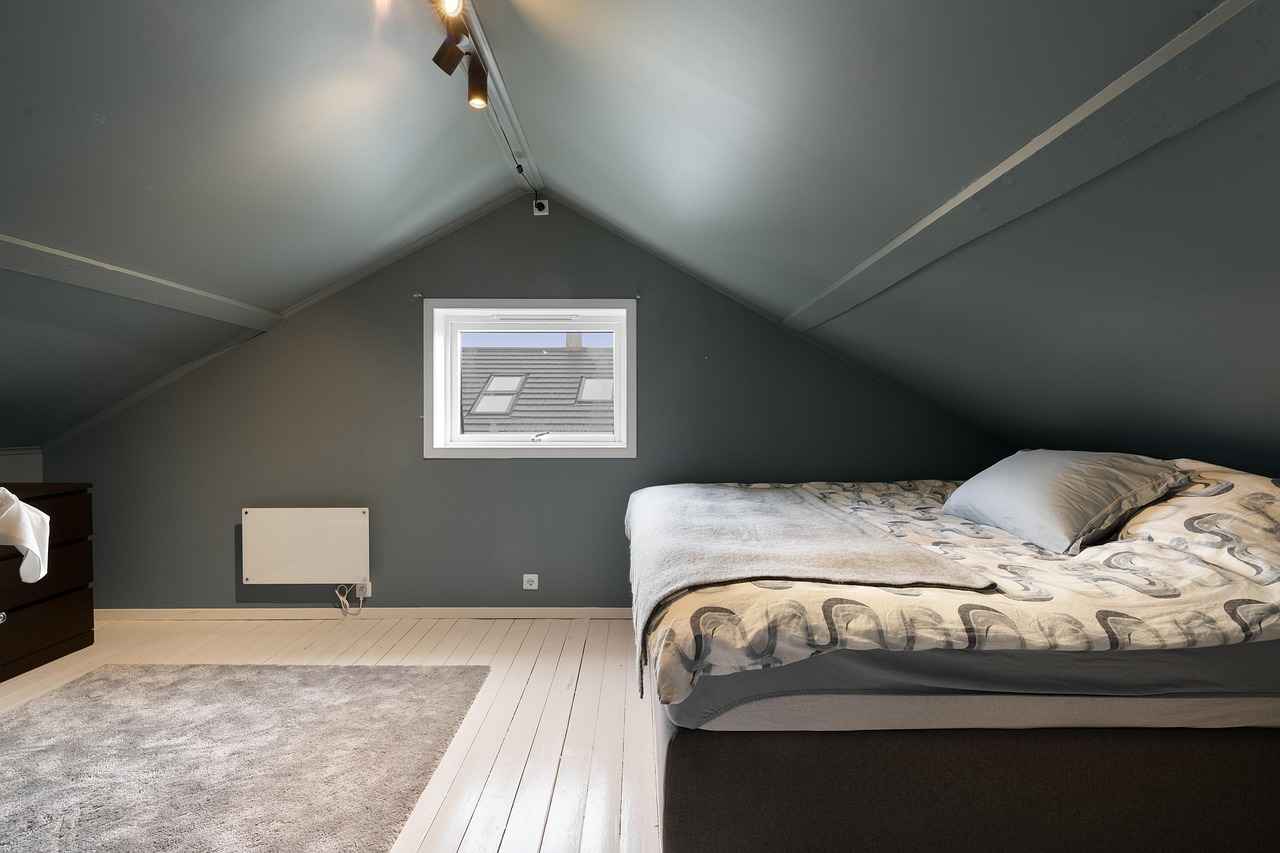
Wall Art and Decor Ideas
Wall art and decor play a crucial role in enhancing the overall aesthetic of the bed head wall design in any modern bedroom. These elements not only serve as decorative pieces but also reflect personal style and add character to the space. In this section, we will explore various ideas and tips for incorporating wall art and decor that can transform your bed head wall into a stunning focal point.
When selecting wall art, consider pieces that resonate with your personal taste and the overall theme of your bedroom. Here are some popular options:
- Framed Artwork: Choose paintings or prints that complement your color scheme. Large statement pieces can create a dramatic effect, while smaller pieces can be grouped together for a gallery-style display.
- Canvas Prints: These offer a modern touch and can be found in various styles, from abstract to landscapes, allowing for versatility in design.
- Photography: Personal photographs or artistic shots can add a personal touch, making the space feel more intimate and unique.
Mirrors are not only functional but also serve as excellent decorative elements. They can enhance the elegance of the bed head wall in several ways:
- Creating Illusion of Space: Mirrors reflect light, making the room appear larger and brighter. Placing a large mirror above the bed can create a stunning visual impact.
- Adding Depth: Layering mirrors with other decor can add depth to the design, making the bed head wall more dynamic.
- Decorative Mirrors: Consider using uniquely shaped or ornate mirrors to serve as both a functional and decorative element.
Decorative shelves can be a practical addition to your bed head wall while also providing an opportunity for creative expression:
- Displaying Accessories: Use shelves to showcase decorative items, such as vases, books, or small sculptures, that reflect your personality.
- Layering with Art: Combine shelves with framed art pieces to create a visually appealing arrangement that draws the eye.
- Mixing Heights: Vary the height of the items on the shelves to create an interesting visual flow and keep the arrangement dynamic.
A gallery wall can serve as a striking focal point in your bedroom. Here are some tips for creating an effective gallery wall:
- Curate Your Collection: Select a mix of art styles, sizes, and frames to create visual interest. Consider a theme or color palette to unify the collection.
- Layout Planning: Before hanging, lay the pieces on the floor to experiment with different arrangements. This helps to visualize the final look.
- Spacing: Maintain consistent spacing between frames for a cohesive appearance, but feel free to mix frame styles for an eclectic vibe.
Incorporating textiles can soften the hard surfaces of your bed head wall:
- Wall Hangings: Tapestries or fabric wall art can add warmth and texture, making the space feel more inviting.
- Quilts or Throws: Hanging a decorative quilt can serve as both art and a cozy element, adding layers to the design.
In summary, incorporating wall art and decor into your bed head wall design can significantly elevate the overall look and feel of your bedroom. By thoughtfully selecting artwork, mirrors, and decorative elements, you can create a personalized and stylish space that reflects your unique taste.
Using Mirrors for Depth
Mirrors have long been celebrated for their ability to transform spaces, and their role in bedroom design is particularly significant. Not only do they reflect light, but they also create the illusion of depth, making rooms appear more expansive and inviting. This article will explore the various ways mirrors can be utilized to enhance the elegance of your bed head wall.
One of the most effective strategies for incorporating mirrors in bedroom design is through strategic placement. Positioning a mirror above or beside the bed can dramatically change the perception of space. For instance, a large mirror hung above the headboard can act as a stunning focal point, drawing the eye upward and creating a sense of height in the room. This technique is particularly beneficial in smaller bedrooms where maximizing space is essential.
Furthermore, mirrors can be used to amplify natural light, making the bedroom feel brighter and more airy. When placed opposite a window, a mirror can reflect sunlight, illuminating the room and enhancing its overall ambiance. This not only contributes to a more cheerful atmosphere but also helps in creating a serene environment conducive to relaxation.
In addition to functional benefits, mirrors can also serve as exquisite decorative elements. A beautifully framed mirror can add a touch of luxury and sophistication to your bed head wall. Consider choosing a frame that complements your existing decor—whether it’s a sleek modern design or an ornate vintage style—to create a cohesive look.
Another innovative approach is to use a series of smaller mirrors to form a gallery wall effect. This arrangement can add visual interest and texture, making the bed head wall a dynamic feature of the room. Experimenting with different shapes and sizes can create a playful yet elegant display, enhancing the overall aesthetic.
When selecting mirrors, it’s essential to consider the style and finish. A mirror with a metallic finish can add a contemporary edge, while a wooden frame can bring warmth and a rustic charm. Additionally, the shape of the mirror can influence the room’s overall vibe. Round mirrors, for example, can soften angular lines and create a more inviting atmosphere.
Moreover, mirrors can be integrated into other design elements, such as shelves or wall sconces. For example, a shelf with a mirrored backing can reflect light and create depth while providing space for decorative items. Similarly, wall sconces placed beside a mirror can enhance the lighting effect, making the space feel even more inviting.
It’s also worth noting that mirrors can contribute to the overall balance of the room. If one side of the bed has a lamp or a piece of artwork, placing a mirror on the opposite side can create symmetry, which is visually pleasing. This balance is crucial in achieving a harmonious design, ensuring that the space feels cohesive and well-thought-out.
In summary, mirrors are a versatile tool in modern bedroom design, particularly when it comes to enhancing the bed head wall. By reflecting light, creating the illusion of space, and serving as decorative elements, mirrors can significantly elevate the elegance and functionality of your bedroom. Whether you choose a single statement piece or a collection of smaller mirrors, their impact on the overall aesthetic cannot be overstated. Embrace the beauty of mirrors and transform your bedroom into a stylish sanctuary.
Gallery Walls as a Focal Point
A gallery wall is more than just a collection of framed art; it is an opportunity to express personal style and creativity in a way that enhances the overall aesthetic of a bedroom. By carefully curating a selection of art pieces or photographs, you can transform the area above the bed into a striking focal point that draws the eye and adds character to the space.
When designing a gallery wall, consider the following elements:
- Theme and Cohesion: Choose a theme that resonates with your personal taste and complements the bedroom decor. This could be a color palette, a specific art style, or a collection of photographs from travels. The key is to maintain a sense of cohesion that ties the pieces together.
- Frame Selection: The frames you choose can significantly impact the overall look of the gallery wall. Opt for frames that match or complement each other in color and style. Mixing frame styles can work if done thoughtfully, creating an eclectic yet harmonious appearance.
- Layout Planning: Before hanging the art, lay out the arrangement on the floor. This allows you to experiment with different configurations and find the most visually appealing layout. Consider using a mix of sizes and orientations to create visual interest.
- Spacing: Consistent spacing between frames is crucial for a polished look. A common approach is to maintain 2-4 inches of space between each piece. However, this can vary based on the size of the wall and the artwork.
Incorporating a gallery wall not only personalizes the space but also creates a captivating backdrop for the bed. It can serve as a conversation starter and a reflection of your personality, making the bedroom feel more inviting and unique.
Additionally, consider the lighting around your gallery wall. Proper illumination can enhance the artwork and create a warm ambiance. Wall sconces or picture lights can be strategically placed to highlight the pieces without overwhelming the space.
Finally, remember that a gallery wall is not a permanent fixture. Feel free to change the artwork as your tastes evolve or as seasons change. This flexibility allows you to keep the space fresh and engaging, making the bedroom a dynamic environment that reflects your journey and experiences.
In summary, a well-designed gallery wall above the bed is an excellent way to enhance the bedroom’s decor. By carefully selecting and arranging art pieces, you can create a stunning focal point that not only beautifies the space but also tells your unique story.
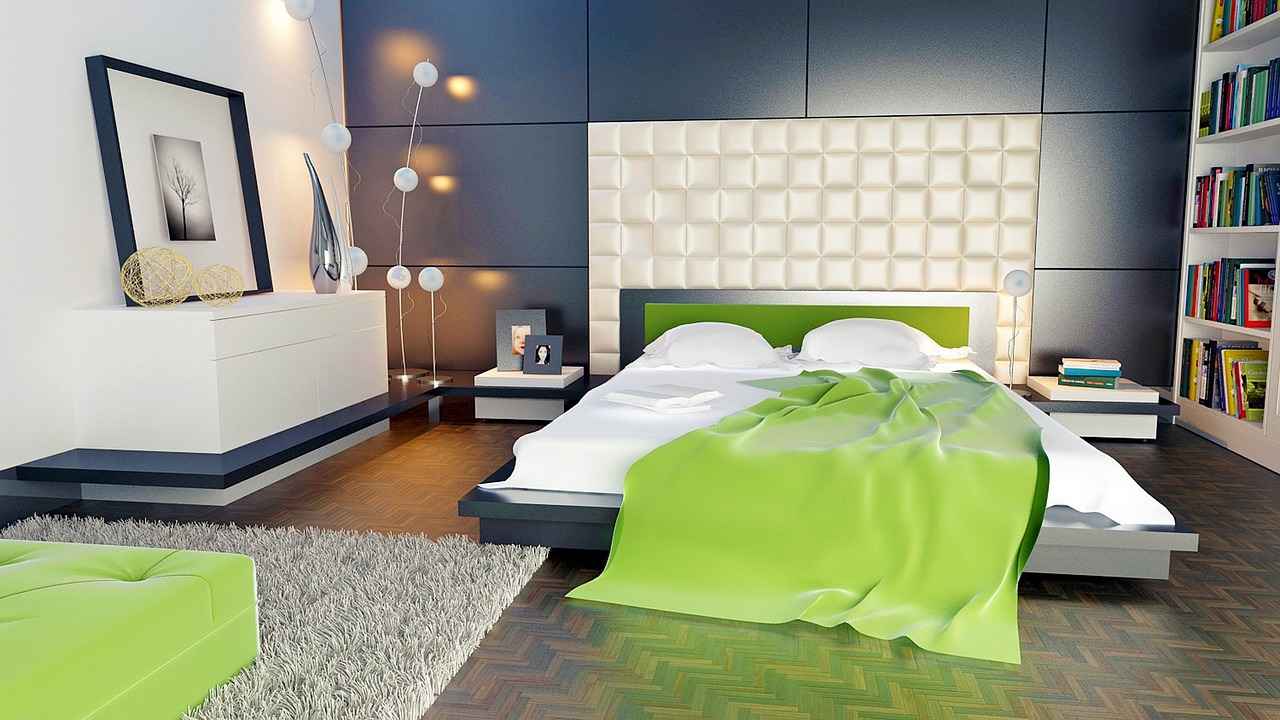
Color Schemes for Bed Head Walls
The choice of color for the bed head wall is a crucial aspect of bedroom design, as it plays a significant role in shaping the overall mood and ambiance of the space. Selecting the right color can transform a room from a mundane area into a sanctuary of relaxation or a vibrant hub of energy.
Colors have a profound psychological effect on our emotions and behaviors. Understanding these effects can help in making informed choices when designing your bedroom. Here are some insights into how different colors can influence mood:
- Calming Neutrals: Shades such as beige, soft gray, and light taupe are known for their ability to create a serene environment. These tones are especially effective in bedrooms where relaxation and rest are priorities.
- Earthy Tones: Colors like sage green or muted browns can bring a sense of grounding and stability, making the bedroom feel more connected to nature.
- Bold Colors: Vibrant hues such as deep blues, rich reds, or striking greens can energize the space. These colors can serve as a focal point, drawing attention and creating a dynamic atmosphere.
Soft, neutral colors are ideal for those seeking a peaceful retreat. These tones not only promote relaxation but also provide versatility in decor. For instance, a beige bed head wall can seamlessly blend with various bedding styles and accessories, allowing for easy updates as trends change. Additionally, neutral colors can make a room appear larger and more open, contributing to a tranquil environment.
In contrast, bold colors can dramatically alter the perception of space and mood. A deep navy blue or a vibrant emerald green as a bed head wall color can infuse energy and sophistication into the room. These colors can serve as a stunning backdrop for artwork or decorative elements, making the bed area a true focal point of the bedroom.
For those looking to create a more dynamic look, combining colors can add depth and interest to the bed head wall. Consider using a two-tone approach, where the upper portion of the wall is painted a lighter shade and the lower portion a darker hue. This technique not only enhances visual appeal but also helps in defining the space. For example:
| Color Combination | Effect |
|---|---|
| Soft Gray and Charcoal | Creates a sophisticated, modern look. |
| Pastel Pink and White | Offers a fresh, airy feel. |
| Teal and Cream | Provides a vibrant yet calming atmosphere. |
In addition to color, the texture of the bed head wall can further enhance its impact. Textured finishes, such as shiplap, wallpaper, or fabric panels, can add dimension and tactile interest. An accent wall with a bold color and a unique texture can create a stunning backdrop that draws the eye and enhances the overall design of the bedroom.
Ultimately, the color scheme of the bed head wall is a vital aspect of bedroom design that should not be overlooked. By carefully selecting colors that resonate with your personal style and desired mood, you can create a space that is both beautiful and functional. Whether you opt for calming neutrals or bold statements, the right color choice will significantly enhance your bedroom experience.
Neutral Tones for Serenity
When it comes to creating a serene and peaceful environment in the bedroom, the choice of color plays a pivotal role. Neutral tones, such as beige, gray, and pastel shades, are particularly effective in promoting a tranquil atmosphere conducive to restful sleep and relaxation. This article delves into the significance of these colors and how they can transform your bedroom into a calming sanctuary.
Color psychology suggests that colors can significantly affect our mood and emotions. In the context of a bedroom, where we seek rest and rejuvenation, soft and muted colors are ideal. They create a backdrop that is not only visually appealing but also emotionally soothing.
- Promotes Relaxation: Colors like beige and soft gray are known for their calming effects. They can help reduce stress and anxiety, making it easier to unwind at the end of the day.
- Enhances Sleep Quality: Neutral shades create a serene environment that can improve sleep quality. By minimizing distractions, these colors help signal to your brain that it’s time to rest.
- Versatile and Timeless: Neutral tones are incredibly versatile, allowing for easy integration with various decor styles. Whether your bedroom features modern, traditional, or eclectic design elements, these colors provide a timeless appeal.
When selecting neutral colors for your bedroom, consider the following:
- Beige: A warm and inviting color, beige pairs well with other warm tones and adds a touch of coziness to the room.
- Gray: This versatile color comes in various shades, from light to dark. Light gray can create an airy feel, while darker shades add depth and sophistication.
- Pastel Shades: Soft pastels, such as mint green or blush pink, can introduce a hint of color while maintaining a serene atmosphere. These shades work beautifully with white or light wood furnishings.
To enhance the calming effect of neutral tones, consider incorporating different textures into your bedroom design. For example:
- Textured Fabrics: Use soft linens, plush throws, and textured pillows to add warmth and comfort to your neutral color palette.
- Wood Elements: Incorporate wooden furniture or accents to create a natural and organic feel that complements the soothing colors.
- Artwork and Decor: Choose artwork or decor items in subtle, neutral tones that harmonize with the overall color scheme, avoiding overly bright or distracting pieces.
Lighting is crucial in enhancing the ambiance of a neutral-toned bedroom. Soft, warm lighting can accentuate the calming effects of your color choices. Consider the following:
- Layered Lighting: Use a combination of ambient, task, and accent lighting to create a balanced and inviting atmosphere.
- Natural Light: Maximize natural light by using sheer curtains that allow sunlight to filter in while maintaining privacy.
Incorporating soft, neutral colors into your bedroom design not only fosters a serene environment but also enhances the overall aesthetic appeal of the space. By thoughtfully selecting shades and complementing them with textures and lighting, you can create a restful retreat that promotes relaxation and rejuvenation.
Bold Colors for Impact
When it comes to modern bedroom design, the choice of color can significantly influence the overall ambiance and aesthetic appeal. Bold colors, such as deep blue or emerald green, can transform a simple space into a dramatic sanctuary. These hues not only serve as a visual focal point but also evoke emotions and set the mood for the entire room.
Incorporating deep blue into the bed head wall creates a sense of tranquility and sophistication. This color is reminiscent of the ocean and sky, offering a calming effect that promotes relaxation. It pairs beautifully with neutral tones like white or gray, allowing the boldness of blue to shine without overwhelming the space. Consider using a matte finish for a more subdued look or a glossy finish to reflect light and add vibrancy.
Emerald green, on the other hand, brings a touch of nature indoors. This rich color is associated with growth and renewal, making it an excellent choice for those looking to create a refreshing atmosphere. Emerald green headboards can be complemented with earthy tones like beige or brown, creating a harmonious balance that feels both luxurious and inviting. A velvet upholstered headboard in emerald green can add texture while enhancing the overall elegance of the bedroom.
To maximize the impact of bold colors, consider the following design tips:
- Accent Walls: Use bold colors to create an accent wall behind the bed. This draws the eye and makes the bed the centerpiece of the room.
- Layering Textures: Combine bold colors with different materials, such as wood or metal, to create depth and interest.
- Complementary Decor: Incorporate decor elements that harmonize with the bold color. For instance, gold or brass fixtures can add a touch of glamour to a deep blue wall.
Furthermore, the psychological effects of color should not be overlooked. Bold colors can energize a space, making it feel more alive. They can also inspire creativity and motivation, making them ideal for a bedroom that doubles as a workspace. However, it’s essential to balance bold colors with softer elements to avoid overwhelming the senses.
In addition to the bed head wall, consider extending bold colors throughout the room. Accent pillows, throws, or artwork can echo the colors of the headboard, creating a cohesive look. A well-thought-out color scheme enhances not only the aesthetic appeal but also the functionality of the space.
In summary, incorporating bold colors like deep blue or emerald green into bed head wall design can dramatically elevate the overall look of a modern bedroom. By thoughtfully combining these colors with various textures, materials, and complementary decor, you can create a striking and inviting atmosphere that reflects your personal style.
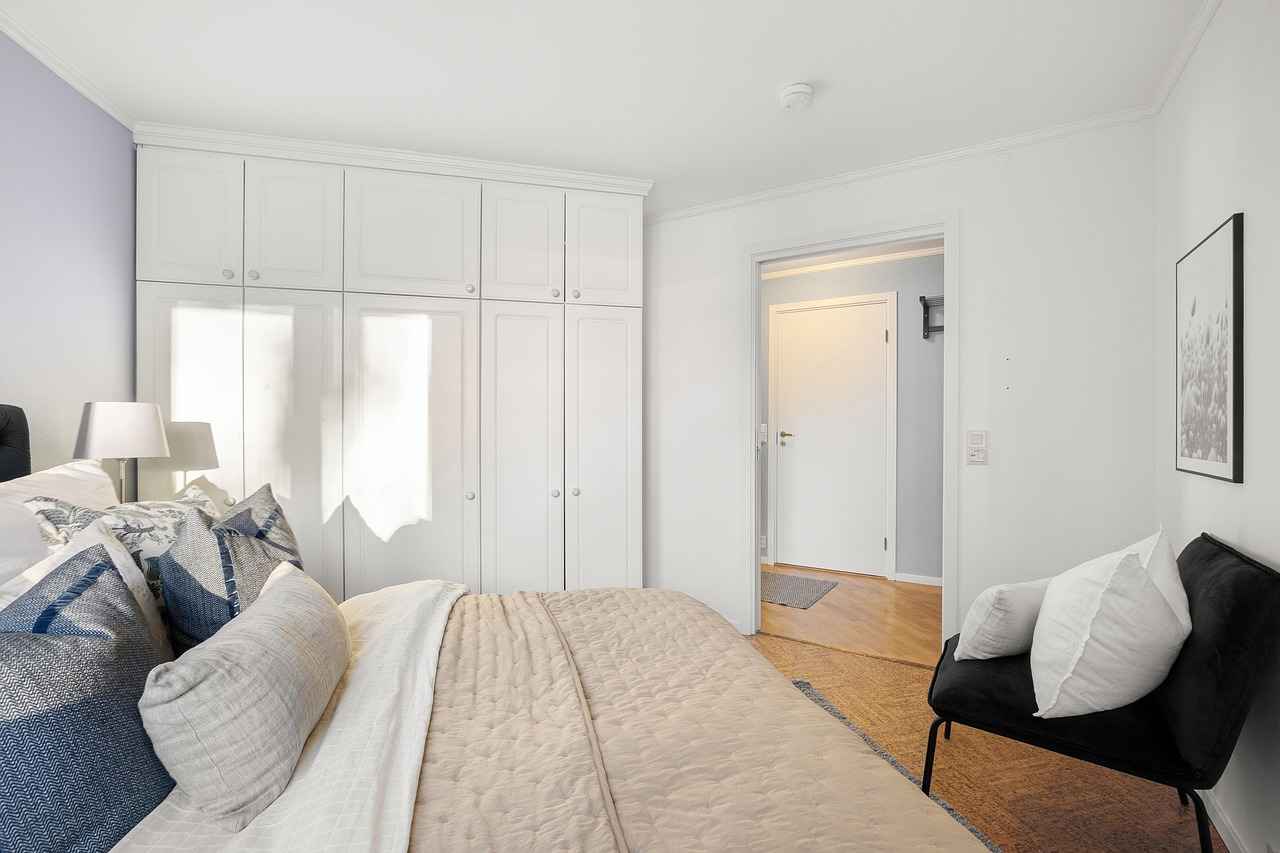
Lighting Considerations for Bed Head Walls
Lighting considerations for bed head walls are essential in creating an inviting and elegant atmosphere in modern bedrooms. The right lighting can not only enhance the aesthetics of the room but also serve practical purposes, such as improving visibility and functionality.
When selecting lighting for bed head walls, it’s important to consider how light interacts with the various materials and colors used in the design. Effective lighting can accentuate textures and colors, making the head wall a true focal point of the room.
- Ambient Lighting: This is the general illumination of the room, providing a warm and inviting atmosphere. Ceiling lights or wall-mounted fixtures can serve this purpose effectively.
- Task Lighting: Task lighting is essential for activities such as reading or working in bed. Adjustable wall sconces or bedside lamps can provide focused light where it’s needed most.
- Accent Lighting: Accent lighting is used to highlight specific features of the bed head wall. This could include spotlights or LED strips that draw attention to artwork or architectural elements.
Wall sconces are a popular choice for bed head walls, combining functionality with style. By flanking the bed with sconces, you can create a balanced and visually appealing look. These fixtures come in various designs, allowing you to choose options that complement the overall decor. Consider using dimmable sconces to adjust the mood of the room easily, transitioning from bright light for reading to soft illumination for relaxation.
Integrating LED strip lighting along the edges of the bed head wall can add a contemporary touch. This type of lighting provides a soft glow that enhances the overall ambiance without being overpowering. LED strips can be customized in color and intensity, allowing for creative expression and adaptability to different moods. For instance, a warm white light can create a cozy atmosphere, while cooler tones can lend a more modern feel.
Properly placed lighting can significantly enhance the design features of the bed head wall. For instance, if the wall has intricate wood paneling or unique artwork, using directional lighting can draw attention to these elements. This not only elevates the visual appeal but also adds depth to the room. Consider using adjustable fixtures that can be angled to highlight specific areas of interest.
The right lighting can transform a bedroom into a cozy retreat. Soft, warm lights create an inviting atmosphere that promotes relaxation and comfort. Layering different types of lighting—ambient, task, and accent—ensures that the room feels balanced and harmonious. For a truly cozy effect, consider incorporating dimmers that allow you to control the brightness based on the time of day or your activities.
In conclusion, lighting plays a crucial role in enhancing the elegance of bed head walls. By carefully selecting and positioning lighting fixtures, you can create a warm, inviting atmosphere that highlights the design features of your bedroom. Whether you opt for wall sconces, LED strips, or a combination of various lighting types, the right choices will elevate your space and make it a true sanctuary.
Wall Sconces as Decorative Elements
When it comes to enhancing the aesthetic appeal and functionality of a modern bedroom, wall sconces play a pivotal role. These elegant lighting fixtures not only provide essential illumination but also serve as decorative elements that elevate the overall design of the bed head wall. By strategically placing wall sconces on either side of the bed, you can create a balanced and inviting atmosphere that complements your personal style.
One of the primary advantages of using wall sconces is their ability to free up valuable space on nightstands or bedside tables. This is especially beneficial in smaller bedrooms where every inch counts. Instead of bulky lamps, wall sconces offer a sleek alternative that can be mounted at an ideal height, allowing for easy access to light without sacrificing surface area.
Functional Lighting
- Wall sconces provide focused lighting that is perfect for reading or other activities performed in bed. This targeted illumination can help reduce eye strain and create a cozy nook for nighttime routines.
- Adjustable sconces can be particularly useful, allowing you to direct light exactly where it is needed, whether for reading a book or illuminating the entire room.
Decorative Touch
Beyond their functional benefits, wall sconces add a decorative touch that enhances the elegance of the overall design. They come in a variety of styles, materials, and finishes, making it easy to find the perfect match for your bedroom’s theme. Here are a few popular styles:
- Modern Minimalist: Sleek lines and simple shapes characterize these sconces, making them ideal for contemporary spaces.
- Vintage or Industrial: These sconces often feature exposed bulbs and metal finishes, adding a touch of nostalgia and character to the bedroom.
- Artistic Designs: Unique and sculptural sconces can serve as statement pieces, drawing the eye and creating visual interest.
Creating Ambiance
Wall sconces also contribute to the overall ambiance of the bedroom. By using dimmable sconces, you can adjust the brightness to suit different moods, from bright and energetic to soft and romantic. Pairing sconces with warm-toned bulbs can create a soothing atmosphere, perfect for winding down at the end of the day.
When designing your bed head wall, consider the placement of wall sconces carefully. Ideally, they should be installed at eye level to provide the best lighting effect and aesthetic appeal. Additionally, ensure that the sconces are positioned equidistant from the bed to maintain symmetry and balance in the design.
Complementing Other Elements
Wall sconces can beautifully complement other design elements in the bedroom. For instance, if your bed head wall features decorative paneling or artwork, choose sconces that harmonize with these elements. This creates a cohesive look that ties the entire room together.
In conclusion, wall sconces are an excellent addition to any modern bedroom. They provide essential lighting while enhancing the decorative aspects of the bed head wall. With their versatility and range of styles, wall sconces can transform a simple bedroom into a sophisticated and inviting space.
LED Strip Lighting for Modern Appeal
In the realm of modern interior design, LED strip lighting has emerged as a popular choice for enhancing the aesthetic appeal of various spaces, particularly in the bedroom. When integrated along the edges of the bed head wall, this innovative lighting solution not only provides a soft, ambient glow but also elevates the overall design of the room, making it feel more contemporary and inviting.
Utilizing LED strip lighting in bedroom decor is an effective way to achieve a sleek and sophisticated look. This type of lighting is versatile and can be installed in various configurations, allowing homeowners to customize their lighting design based on personal preferences and room dimensions. The soft illumination from LED strips can create a calming atmosphere, perfect for relaxation and unwinding at the end of the day.
One of the significant advantages of LED strip lighting is its energy efficiency. Unlike traditional lighting options, LEDs consume less power and have a longer lifespan, making them a cost-effective choice for homeowners. Additionally, they emit less heat, which is a considerable benefit in maintaining a comfortable bedroom temperature.
- Versatility in Design: LED strip lights can be placed under shelves, along the edges of the bed head wall, or even behind the headboard itself, creating a floating effect that enhances the room’s depth.
- Color Options: Many LED strips come with adjustable color temperatures and RGB options, allowing you to change the ambiance according to your mood or occasion.
- Easy Installation: Most LED strip lights come with adhesive backing, making them easy to install without the need for professional assistance.
To maximize the impact of LED strip lighting, consider the following tips:
- Placement: Position the strips where they can cast light upwards or downwards, creating a gentle wash of light that enhances the textures of the wall and any decor elements.
- Pairing with Other Lighting: Combine LED strip lighting with wall sconces or bedside lamps for a layered lighting effect that adds depth and warmth to the room.
- Dimmer Switches: Installing dimmer switches allows you to adjust the brightness of the LED strips, providing flexibility for different activities, from reading to relaxing.
Moreover, the integration of LED strip lighting can significantly enhance the perceived size of the room. By illuminating the edges of the bed head wall, the lighting draws the eye upward, creating an illusion of height and spaciousness. This is particularly beneficial in smaller bedrooms where maximizing space is essential.
In conclusion, incorporating LED strip lighting into your bedroom design not only adds a modern touch but also enhances functionality and ambiance. It is a practical solution that combines aesthetics with efficiency, making it a top choice for contemporary bedroom designs. As you explore options for your bed head wall, consider the transformative power of LED strip lighting to create a stylish and inviting retreat.
Frequently Asked Questions
- What is a bed head wall design?
A bed head wall design refers to the decorative elements behind the bed that serve as a focal point in the bedroom. It combines style and functionality, enhancing the overall decor of the space.
- What materials are commonly used for bed head walls?
Popular materials include wood, fabric, metal, and wallpaper. Each material offers unique textures and visual appeal, allowing you to customize the look of your bedroom.
- How can I incorporate lighting into my bed head wall design?
Consider using wall sconces for functional and decorative lighting, or integrate LED strip lighting along the edges for a modern touch. Proper lighting can highlight design features and create a cozy ambiance.
- What color schemes work best for bed head walls?
Neutral tones like beige and gray promote a serene atmosphere, while bold colors such as deep blue or emerald green can create a striking focal point. The choice depends on the mood you want to set in your bedroom.
- Can I use wall art to enhance my bed head wall?
Absolutely! Incorporating framed artwork, mirrors, or a gallery wall can add character and interest, making your bed head area a standout feature in the room.














